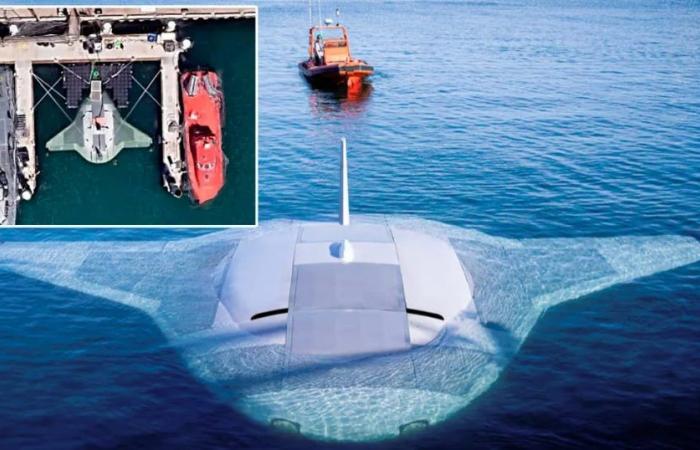A new prototype of the US Navy’s underwater drone, known as the Manta Ray, was apparently discovered by users of Google Maps at the naval base of Port HuenemeCalifornia, reported USA Today. This unmanned underwater vehicle (UUV), designed by the aerospace and defense technology company Northrop Grummanhas the ability to glide through the water without the need for a human crew.
He Manta Raywhose name and shape imitate the sea creature, is part of a program by the Defense Advanced Research Projects Agency (DARPA) of the United States Department of Defense.
Satellite images of the prototype were spotted on Google Maps later this week, shown in online posts that quickly went viral. The images showed an object similar to Manta Rayvisible on the dock at Port Hueneme between two ships.
The agency did not immediately respond to requests for confirmation of USA TODAY.
This prototype, which has been designed for various naval situations, was successfully tested between February and March of this year on the coast of southern California. A publication from the agency explained that the vehicle is intended to foster “a new class of UUV “long endurance, long range and payload capacity, ready for persistent operations in dynamic maritime environments.”
Among the characteristics of the Manta Rayhighlights its ability to float and submerge underwater using its propellers and control surfaces, enabling propulsion and navigation functions.
Kyle Woernerprogram manager DARPAnoted in a statement that “our successful full-scale test of the Manta Ray “validated the vehicle’s readiness to advance toward real-world operations after being quickly assembled in the field from modular subsections.”
The vehicle was built in Maryland and subsequently sent in sections to California to be tested, suggesting a rapid global deployment capability without overloading naval port facilities. “Sending the vehicle directly to its intended area of operation conserves energy that the vehicle would otherwise expend during transit,” Woerner said in a statement.
New York Post He noted that the vehicle can hibernate on the seabed for “very long periods” without needing to be refueled. It also uses an efficient buoyancy gliding system to move through the water.
The Navy’s push to develop this drone technology is aimed at countering Russian and Chinese submarine operations, he added. Telegraph. He Defense Department He said his drone has a range of about 10,000 kilometers, can be armed with nuclear weapons and can reach speeds of up to 185 kilometers per hour.
The combination of cross-country modular transportation, field assembly and subsequent deployment “demonstrates a game-changing capability for an extra-large UUV,” Woerner said. This rapid assembly and deployment capability could have important strategic implications, advancing the potential for long-duration, long-range submarine operations, as demonstrated in recent tests.






